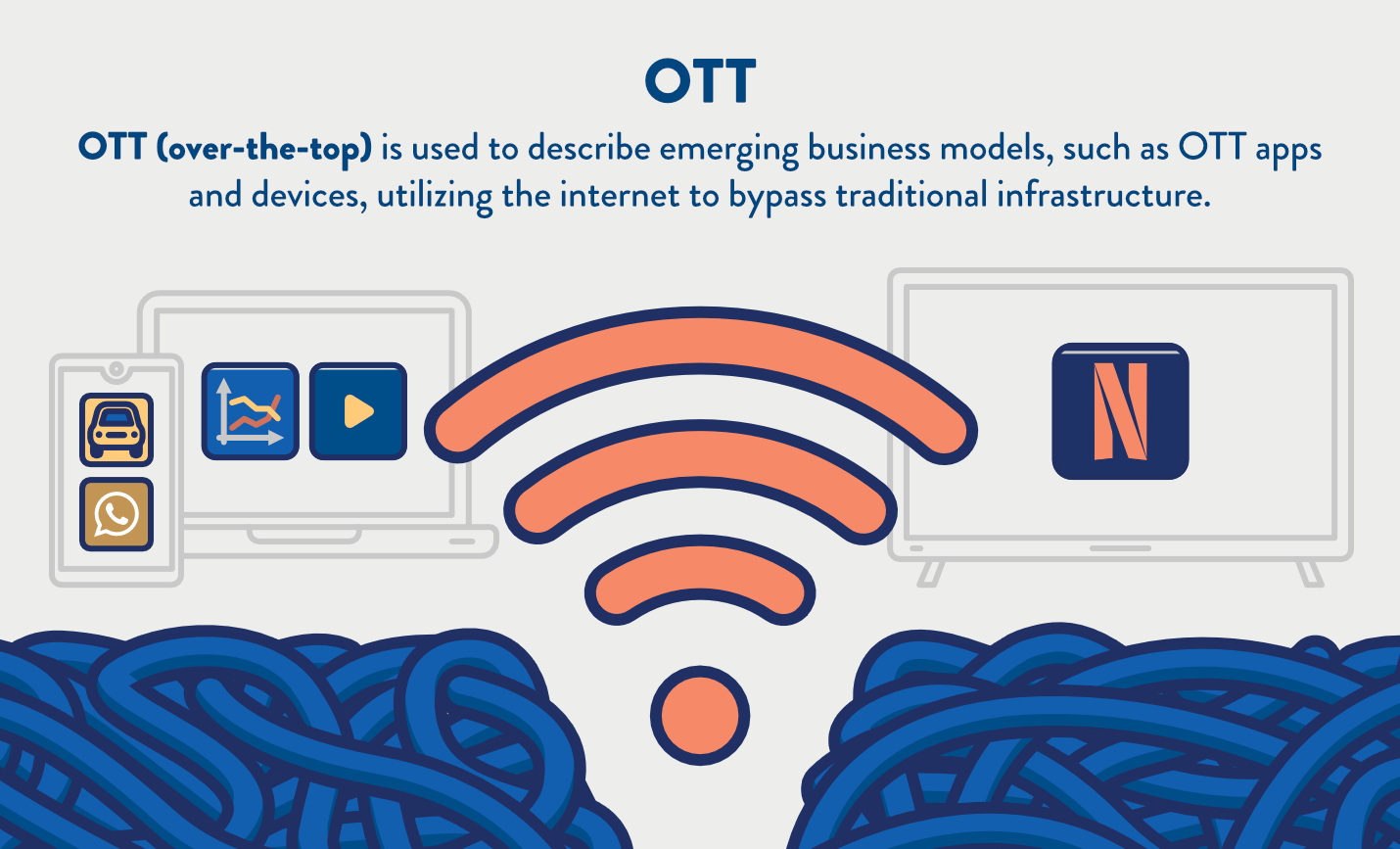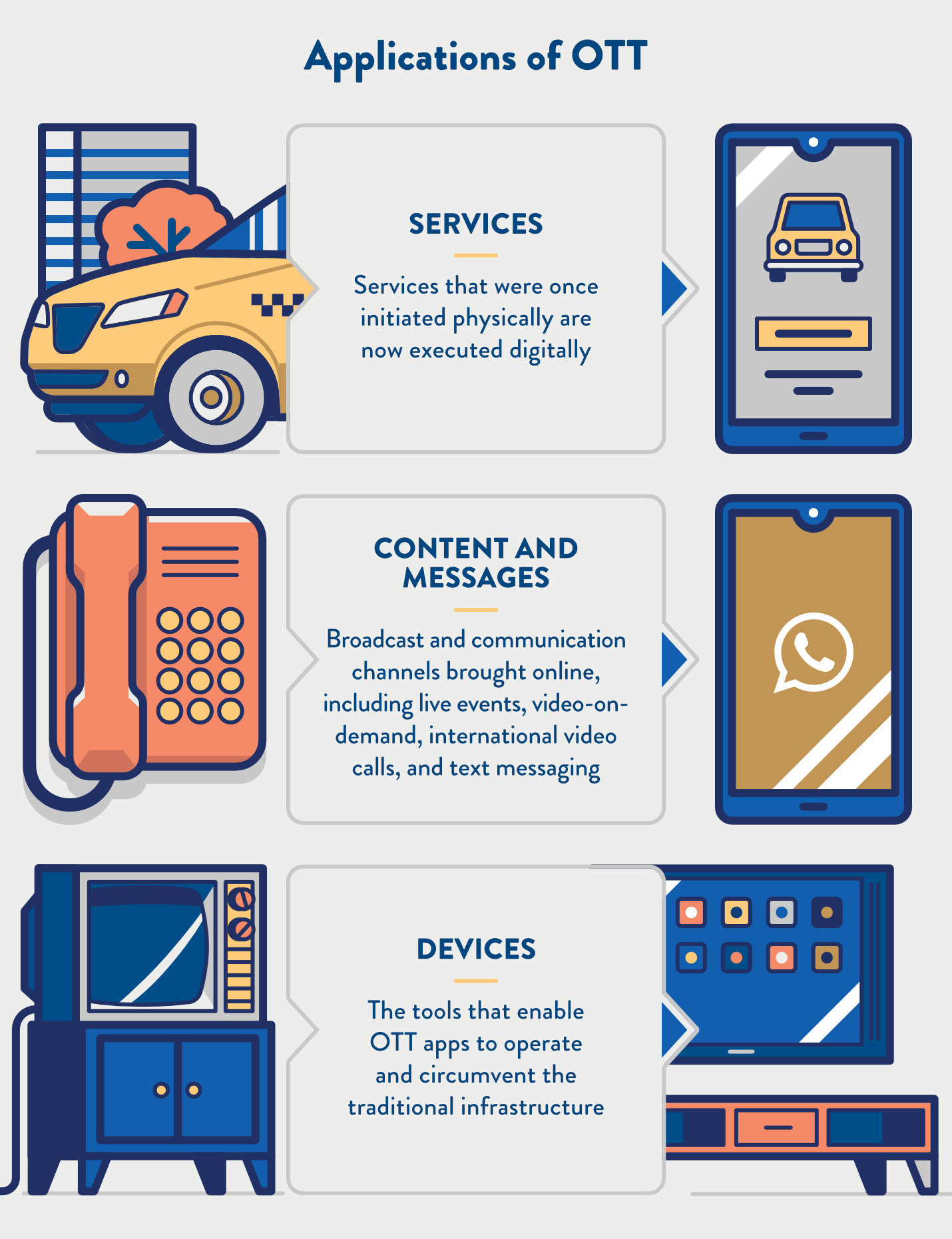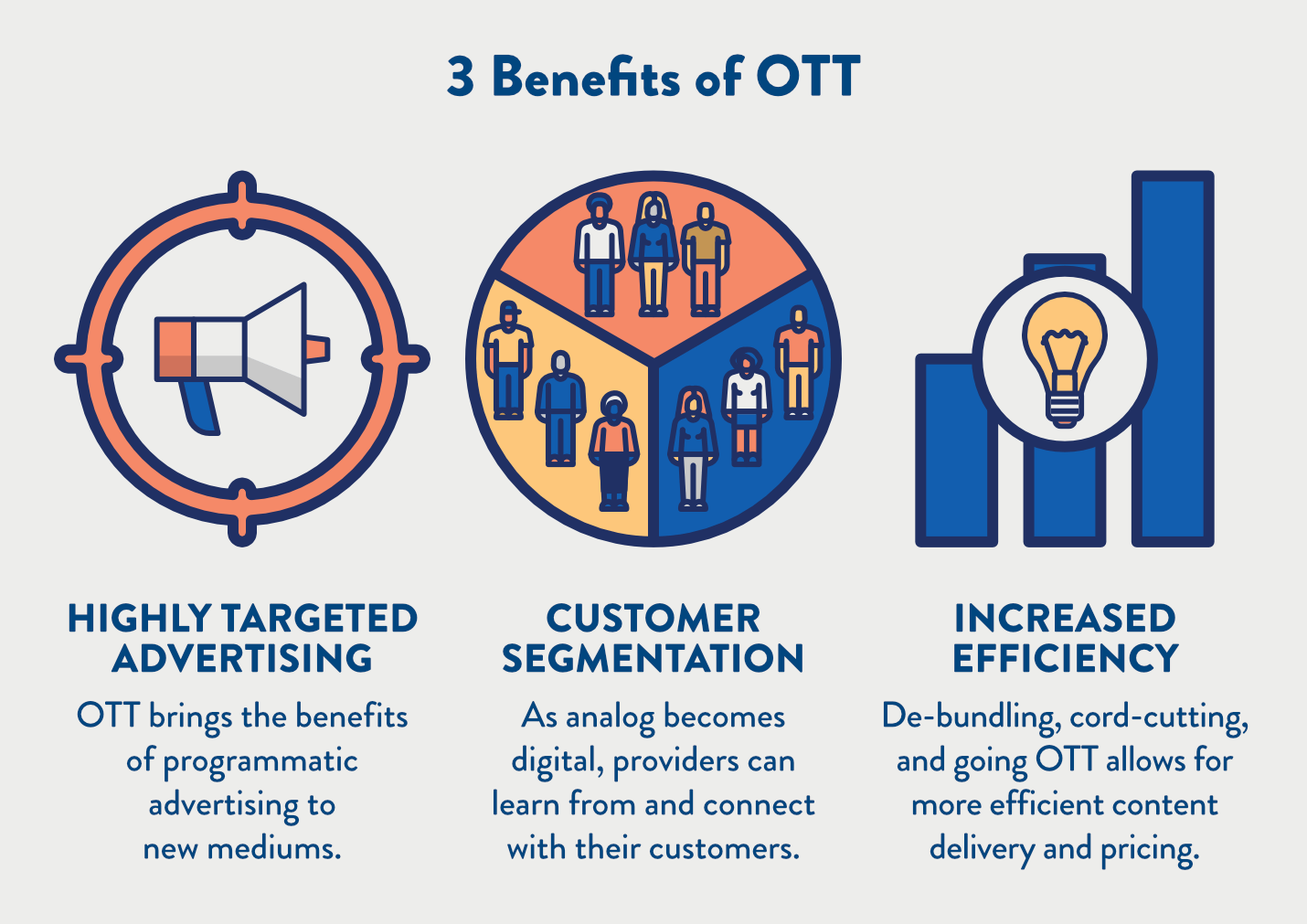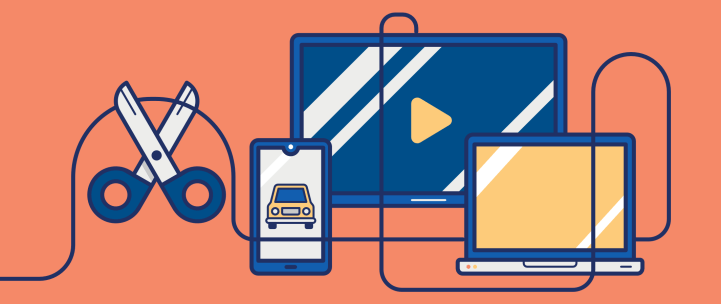OTT is basically the tech version of OTC (over-the-counter) medication.
Traditionally, a business providing media or telecommunications services would charge a subscription price for their bundle of products, prescribing what products and services you receive.
Today, the metaphorical media pharmacy is being opened up à la carte style for customers to pick and choose which products and services they wish to pay for.
This is where OTT comes in. Let’s discuss what OTT means, examples of OTT apps, and the bright future for mobile apps that take advantage of the OTT economy.
What Is OTT?
OTT (over-the-top) initially referred to services that went “over” the heads of cable providers, specifically streaming services. The term OTT has since been applied to many other products and services that stream content to users using the internet as a replacement for pre-existing infrastructure. 
Some OTT apps use the internet as an alternative to cellular service, cable television, and financial services. We like to think of OTT as fitting into three distinct buckets:
1. OTT Services
Services that were traditionally managed offline, using tangible and even physical materials, are being disrupted by apps that are going over the top.
Historically, if you wanted to buy a share of stock, your stockbroker would need to be physically present at the exchange to shout the number of shares and price they were willing to buy or sell. A counterparty would accept if the price was right.
Today, stock and bonds are purchased online and confirmed nearly instantly — surpassing the traditional model and simultaneously saving the vocal cords of countless traders.
Hailing a taxi is another example of how mobile OTT apps have disrupted the traditional model. Once upon a time, you had to physically hail a taxi to fetch a ride. Today, ride-sharing apps have removed this step and in doing so, disrupted the private transportation industry.
2. Content and Message Delivery OTT Apps
OTT has certainly had its impact on the businesses for which the term was first coined — cable providers.
Streaming services such as Hulu, YouTube TV, and Netflix have been responsible for millions of people “cutting the cord,” circumventing the need to pay cable providers for content delivery. These are sometimes referred to as VOD (video on demand), but more on that later.
Other OTT apps use the internet as a method to connect phone calls and send MMS and SMS messages. For example, text messages have traditionally been sent using cellular service but today, iMessage, WhatsApp, and others allow users to send messages whenever the device is connected to the internet. 
3. OTT Devices
Our devices enable the emergence of more over-the-top technologies. Devices such as the Roku, Chromecast, and Fire Stick allow customers to play their favorite streaming content on their TVs.
As IoT devices enter the home, an increasing number of industries are being disrupted by OTT devices. Consider your electricity for a second — where does it come from? The utility company, of course. But if you install solar panels, you can generate your own electricity and circumvent the need for the electrical grid. 
One could argue that solar panels are the most literal form of OTT since they are installed over the top of your house. ?
Benefits of OTT Apps
OTT apps are beneficial to businesses and consumers alike. For example, OTT apps typically offer many more options for payment structures and advertising strategies compared to traditional business models.
Services such as FuboTV can license the rights to live sporting events from the networks that have built out the broadcasting infrastructure, saving FuboTV the investment in the equipment and resources necessary to broadcast live sports.
1. Highly Targeted Advertising
Demand-side platforms (DSP) transformed the programmatic advertising world by offering a way to match ads with the right users more effectively. OTT brings these tools to more channels and platforms that historically could not target or track engagement.
In the past, television advertisers could never really be sure how many people viewed one of their ads or if any further action was taken because of the ad. OTT products offer advertisers the ability to target ads and track the response from various segments more effectively.
2. Customer Segmentation
OTT apps offer marketers the ability to segment customers more precisely, including live user segmentation. Let’s use podcasting as an example.
In the past, radio towers emanated frequencies essentially into the ether — with little to no understanding of who was listening. Today, podcast apps offer audience insights including geography, device types, episode retention, and more.
3. Increased Efficiency
Apps built to bypass the incumbents usually do so because they are able to leverage modern technologies at a better price. As Moore’s Law1 continues to drive the price of computation down, the comparative advantage of OTT apps becomes even more evident.
From a consumer’s point of view, paying for a bundle of TV channels that goes mostly unwatched is unnecessary and inefficient. Instead, pay for the channels you want to watch. 
OTT vs. VOD
VOD, as we touched on earlier, is video on demand. But sometimes these VOD services require a cable package subscription in order to view the content. This is where the line between VOD and OTT is drawn.
OTT apps, like Netflix or Hulu, can serve video content over the internet on demand. But in order to use a VOD service like HBO GO, you must authenticate your TV provider subscription.2
OTT is systematically opposed to this model of slapping a separate paywall on your content. Paying a cable provider to watch content online is like paying a labor union to do the work automation has streamlined.
When containerization was transforming the shipping industry, the labor unions fought to keep their workers employed. To do this, they would physically unpack and repack containers, an inherently inefficient role.
Imagine you go to buy a share of AAPL (that’s Apple’s ticker symbol) on the Robinhood app, but first, someone has to run down to the NASDAQ, shout your buy order, and wait for a sell-side before your app updated with confirmation — this would be inefficient.
Video on demand can be broken down even further into a few categories based around their business model:
- AVOD: Advertising video on demand is an ad-supported service that is free for users to watch, with the caveat being they must watch advertisements. (think YouTube).
- SVOD: Subscription video on demand is a service that provides access to video content with a regularly recurring fee structure. (ie. Netflix).
- TVOD: Transactional video on demand is similar to a pay-per-view model. (ie. Amazon Prime Video)
How OTT Impacts Mobile Marketing
Marketers must understand OTT enough to see that their ecosystem is changing rapidly.
The strategies and channels that worked last year may not work next year, and the strategies that work next year may not exist this year. What won’t change is humanity’s gravitation towards low-cost convenience, which is where OTT is the most disruptive.
To learn more about what fuels growth marketing strategies for apps in the OTT space, check out our report analyzing 8.7 billion data points. In this report, you’ll learn how to improve onboarding, engagement, retention, re-installs, and more.

See how today’s top brands use CleverTap to drive long-term growth and retention
Subharun Mukherjee 
Heads Cross-Functional Marketing.Expert in SaaS Product Marketing, CX & GTM strategies.
Free Customer Engagement Guides
Join our newsletter for actionable tips and proven strategies to grow your business and engage your customers.















































